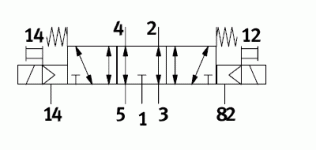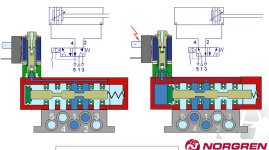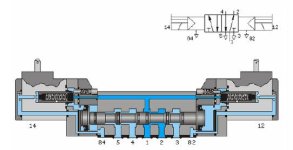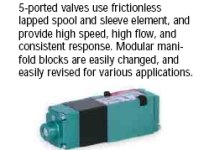Hi there.
I have a quite common pneumatic installation, with a pneumatic cylinder that activates a diverter plough by lifting and lowering.
There is a padlockable isolator/dearation switch in front of the solnoid valve block that controls the cylinder.
The solenoid block is the 5/3-way type with deareation in the middle position (see attached diagram). The air is supplied from the isolator switch to port 1 in the diagram.
I am wondering what happens in case the solenoid is active, and the isolator switch is closed (incoming air is deareated).
Does the solenoid go into the middle postion, because it looses the piloting air ?
Or does it stay in the current position ?

I have a quite common pneumatic installation, with a pneumatic cylinder that activates a diverter plough by lifting and lowering.
There is a padlockable isolator/dearation switch in front of the solnoid valve block that controls the cylinder.
The solenoid block is the 5/3-way type with deareation in the middle position (see attached diagram). The air is supplied from the isolator switch to port 1 in the diagram.
I am wondering what happens in case the solenoid is active, and the isolator switch is closed (incoming air is deareated).
Does the solenoid go into the middle postion, because it looses the piloting air ?
Or does it stay in the current position ?












